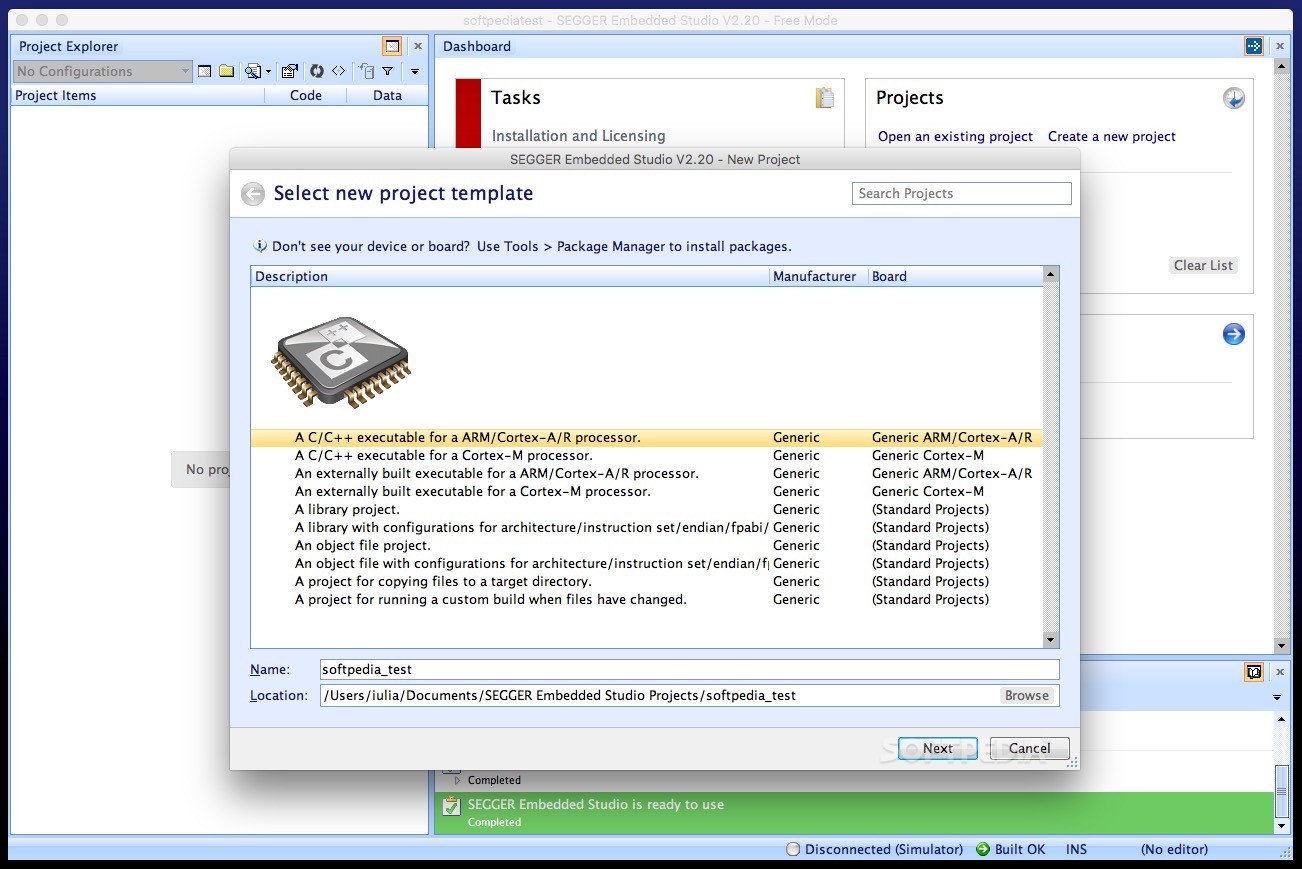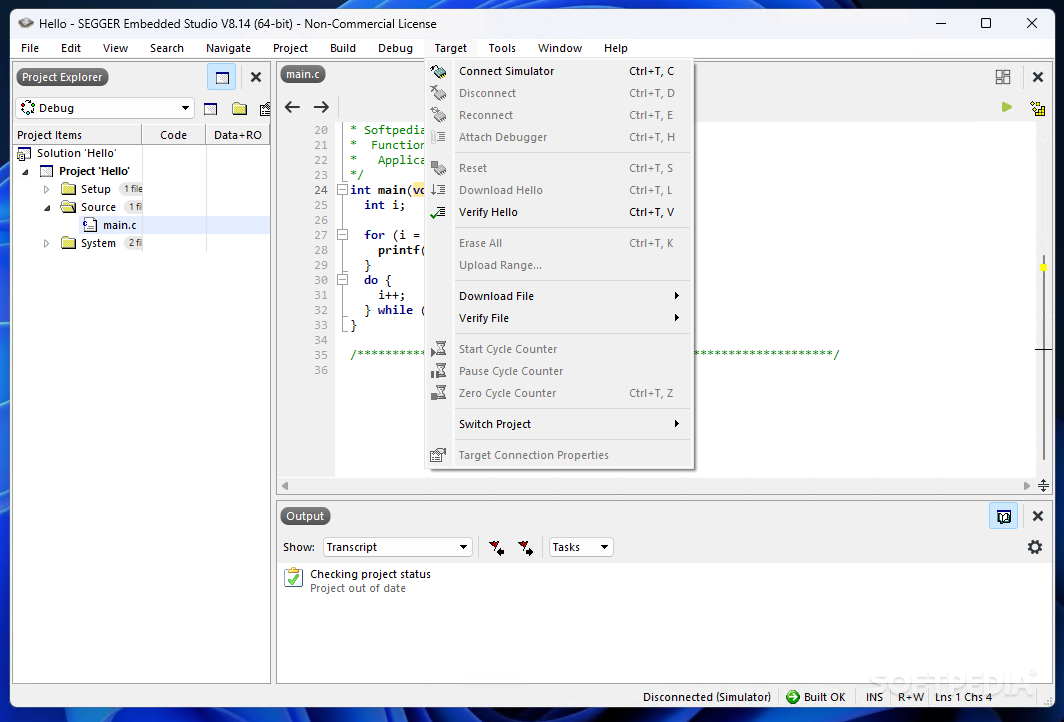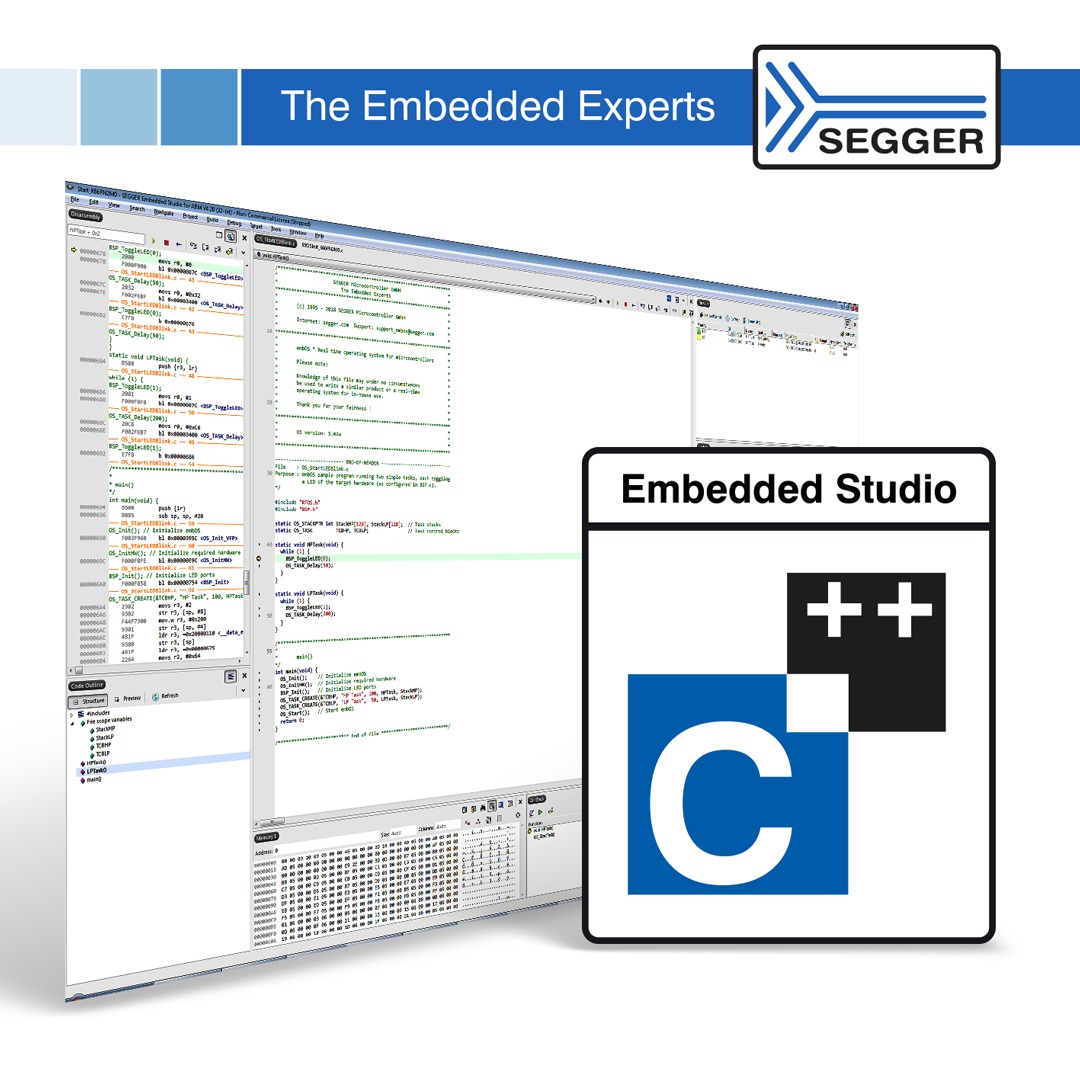
- #Segger embedded studio csv update#
- #Segger embedded studio csv full#
- #Segger embedded studio csv software#
- #Segger embedded studio csv code#
< 0: Error.Ī Embedded Studio project for the emPower board that exposes I/O of a UART port can be downloaded here: File:RTL-UART-IO.zipĪ minimal implementation of the I/O functions could look like the below: Int _SEGGER_RTL_X_file_read(_SEGGER_RTL_FILE * stream, char * s, unsigned len) // Read data from file stream. Int _SEGGER_RTL_X_file_stat(_SEGGER_RTL_FILE *stream) // Get file status. When no standard I/O mechanism is implemented, the user can supply an implementation of the low-level routines to do output and optionally input. Note: This section applies to Embedded Studio V6.12 and later. Use user-supplied I/O mechanisms, such as output on a UART.
#Segger embedded studio csv code#
No code for formatting is required on the target, saving 1 - 3 kiloBytes of ROM. The debugger reads the format string and the parameters from the target and feeds it to its formatter to be printed. With host formatting printf output is processed by the debugger instead of on the target. On halt, the debugger reads and executes the operation command and parameters.Īvailable on all targets (Cortex-M, Cortex-A, Cortex-R, RISC-V) The J-Link reads the SWO pin while the target is running.Īvailable on all Cortex-M based systems with a SWO pin. The target application writes the output string to the ITM stimulus ports.
#Segger embedded studio csv full#
To use the full RTT API, the RTT Target Package needs to be added to the Embedded Studio project: RTT in Embedded Studio SWO SEGGER Embedded Studio provides RTT printf() functionality automatically.

Or its content should be encapsulated with #if !defined(_SEGGER_RTL_VERSION). When using the SEGGER Runtime Library, this file should be removed from the project, Older projects might include SEGGER_RTT_Syscalls_SES.c or a similar file to override printf(). Suitable for applications with real-time requirements. The J-Link reads the buffer while the target is running. The target application writes the output string to a buffer in RAM. Use SEGGER Real-Time Transfer (RTT), which enables super fast output without halting the system. To read more about the DevKit, refer to RuuviLab’s tutorial.There are different mechanisms for different application requirements. A great tool for this is Nordic Semiconductor’s Power Profiler Kit which is compatible with the nRF52-DK evaluation board. Note also that if you’re developing your own firmware, power consumption measurements are recommended so that possible current leaks can be obtained.

#Segger embedded studio csv update#
The DevKit isn’t needed if you’re happy to flash your RuuviTags over-the-air.įor most of the people, DFU OTA (Device Firmware Update Over-the-Air) is enough if no protocol stack or bootloader has to be replaced or no serious debugging is needed.
#Segger embedded studio csv software#



 0 kommentar(er)
0 kommentar(er)
